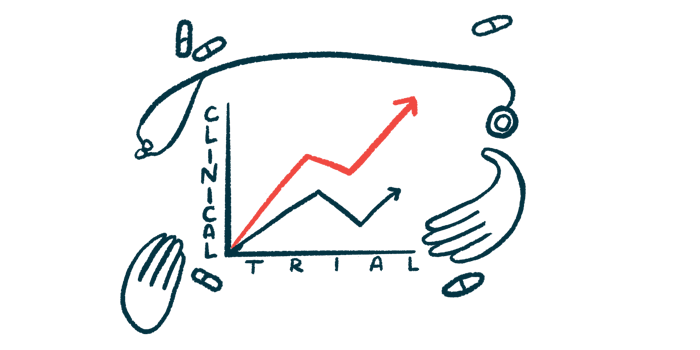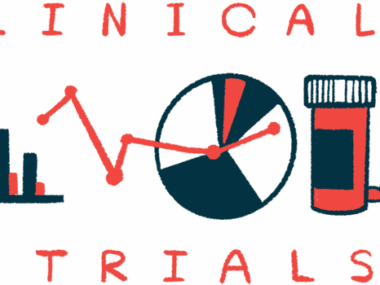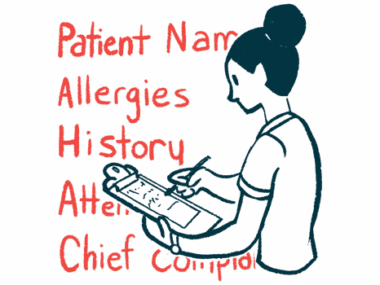Pociredir well tolerated, shows promising activity in SCD trial
Safety, tolerability of investigational oral therapy being evaluated
Written by |

Pociredir, an investigational oral therapy for sickle cell disease (SCD), was well tolerated and showed signs of promising activity in a group of patients treated with the 12 mg dose in a Phase 1b clinical trial, its developer Fulcrum Therapeutics announced.
The ongoing trial, called PIONEER (NCT05169580), aims to evaluate the safety, tolerability, and pharmacological properties of pociredir in adults with SCD, ages 18 to 65. Participants are being given pociredir once daily for up to 12 weeks, or about three months, across multiple dose levels, ranging from 2 mg to 20 mg. There will then be a one-month follow-up period.
Findings from the 12 mg dose group were discussed during a conference call and webcast hosted by Fulcrum.
“We are highly encouraged by these data from the 12 mg cohort of the PIONEER trial and believe they represent an important milestone in our mission to transform the treatment of sickle cell disease,” Alex C. Sapir, Fulcrum’s president and CEO, said in a company press release.
Pociredir designed to block key protein
SCD is caused by mutations that result in the production of a faulty version of adult hemoglobin, the protein that enables red blood cells to carry oxygen through the body. The defective protein causes red blood cells to take on a sickle-like shape, making them prone to die prematurely and block small blood vessels, which can limit oxygen delivery to tissues.
Before birth, the body produces fetal hemoglobin (HbF), a form of the protein that is gradually replaced by adult hemoglobin shortly after birth. This switch is partly controlled by a protein called BCL11A, which suppresses HbF production.
Pociredir, formerly known as FTX-6058, is designed to block a protein called embryonic ectoderm development (EED) that’s part of the polycomb repressive complex 2 (PRC2). By blocking EED, pociredir may downregulate BCL11A and other key HbF repressors, allowing HbF production to be turned back on and potentially easing painful vaso-occlusive crises (VOCs) and other SCD symptoms.
Signs of reduced red blood cell destruction seen
Interim results from the first 16 patients who completed the 12-week treatment period with pociredir at the 12 mg dose in PIONEER showed the therapy was well tolerated and led to increases in HbF levels.
Mean HbF levels rose from 7.6% to 16.2%, reflecting a mean absolute increase of 8.6%. Seven of the 16 participants (44%) saw their HbF levels rise above 20%, a threshold associated with a significantly reduced risk of VOCs, according to Fulcrum’s analysis of real-world data.
The proportion of red blood cells containing HbF, or F-cells, increased from a mean of 34% to 67% after 12 weeks in eight participants, suggesting pan-cellular HbF induction — meaning HbF was reactivated and broadly distributed across the red blood cell population.
Signs of reduced red blood cell destruction, or hemolysis, were also seen. Mean total hemoglobin increased by 0.9 g/dL — from 7.8 g/dL to 8.7 g/dL — indicating less red blood cell breakdown and a reduction in anemia, according to the company.
We believe that with the level of HbF induction observed coupled with improvements in key markers of hemolysis and anemia, evidence of pan-cellular induction of HbF, and an encouraging trend in VOC reduction, pociredir, as a once-daily oral therapy, has the potential to treat SCD patients around the world who continue to battle with their disease.
A trend toward fewer VOCs was also observed during the treatment period. Eight of the 16 patients (50%) reported no VOCs over the 12 weeks they were on pociredir.
Pociredir also had a favorable safety profile, with no treatment-related serious adverse events or discontinuations. All treatment-related adverse events were mild.
These findings are consistent with safety data reported before the trial was temporary paused in 2023, when the U.S. Food and Drug Administration placed a clinical hold due to concerns about potential cancer risk associated with therapies targeting PRC2. The hold was lifted later that year after the implementation of stricter inclusion criteria, allowing enrollment in the 12 mg dose group to continue.
“We believe that with the level of HbF induction observed coupled with improvements in key markers of hemolysis and anemia, evidence of pan-cellular induction of HbF, and an encouraging trend in VOC reduction, pociredir, as a once-daily oral therapy, has the potential to treat SCD patients around the world who continue to battle with their disease,” Sapir said.







